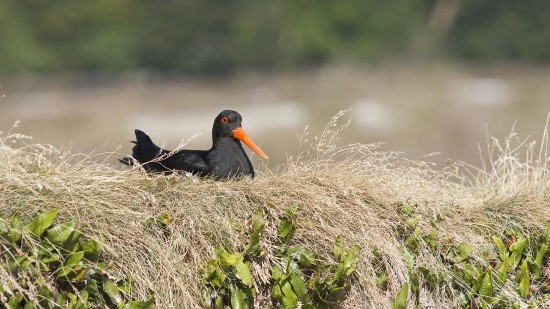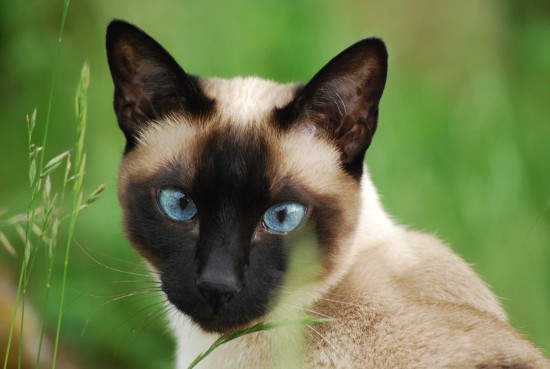

Northumberland is the most northerly county of England that has a greatly diverse landscape. The North Sea coastline is a designated Area of Outstanding Natural Beauty while the Cheviot Hills are in the northwest and the large Northumberland National Park spans around a quarter of the county.
When it comes to birdwatching, there are no shortage of places to visit depending on what type of birds you want to see or kind of landscape you would like to visit. Here are a few ideas to inspire you.
One of the best spots in the county, and amongst the best in country, are the Farne Islands. These are a group of islands off the coast around a mile and half from the mainland for the closest. There are frequent boat trips from Seahouses to certain islands, though others are protected. As well as birds, there are around 6000 grey seals seen with the pups from September to November. Some of the birds that can be seen around the islands include Common Eider, Fulmar, Cormorant, Oystercatchers, Ring Plovers, Sandwich Terns, Barn Swallow and Rock Pipit. There is also a sizeable colony of Puffins who evict rabbits from their burrows to nest there themselves!
Lindisfarne is known for its historical relevancy and connections with St Bede but part of the island is a National Nature Reserve. It is known for being the wintering spot for six internationally important species. The pale-bellied Brent geese regularly winter in the UK at this location only while other important visitors include the pink footed and greylag geese, wigeons, bar-tailed godwits and grey plovers.
Low Newton is a fresh water pool near the coast that is best visited during the migration times of the year. It has visits from Grey and Wilson’s Phalaropes as well as purple heron and the rare bittern. It also has a range of warblers in the trees and shrubs around the edges of the pool including yellow-browed, Pallas and barred Warbler. The fields around the reserve are home to wheatear, yellowhammer and stonechats as well as kestrel and sparrowhawk.
Coquet Island is 1 mile from the mouth of the River Coquet at Amble and is an RSPB site known for its internationally important breeding populations of Sandwich Tern and the rarer Roseate Tern as well as large numbers of Eider, Common Tern and Puffin.
Newbiggin-by-the-Sea is a small town that has a big birdwatching reputation. It can be a bit rough when the cold winter winds come in from the east but is worth braving the cold for the views of the bay and sea. It is a common stop over spot for many autumn and spring migrants so has a history of some unusual sightings.
Holywell Dene runs for six kilometres following the Seaton Burn through Seghill and Seaton Sluice before reaching the sea. It was the spot of the first recorded sighting of a Yellow browed warbler and rarities are still often seen. The pond on the site is a result of mining subsidence and many over-wintering species are attracted to it due to its proximity to the sea. Breeding residents include little grebe, pochard, sedge warbler and greylag geese. In winter, wildfowl such as goldeneye, wigeon and tufted duck join the residents as well as passing visits from green sandpipers and greenshank.
Caistron is a series of lakes beside the River Coquet, 4 miles west of Rothbury that have been created by the extraction of gravel. This stopped in 1969 and the land was transferred to a nature reserve. The record for number of species there was 180 – included in these are Great Reed Warblers, Ferruginous Duck and Black necked Grebes. The area has a range of different landscapes as well as the water including alder, conifer and willow plantations and reed beds. The birds that can be seen are varied by season so always check if you want to see a specific bird what time of the year may be best. All year round familiar faces however include red-legged partridge, lapwing, tawny owl, kingfisher, skylark, dipper, various tits and finches.
Harbottle Crags and Lough is half a mile to the west of the village of Harbottle heading towards Alwinton. There is a great deal of varied habitat with correspondingly varied birds. The mixed woodland nearest the road has great spotted woodpecker as well as redstarts, blackcaps, treecreepers and Garden Warblers. The River Coquet flows through the area and both grey and pied wagtail can be seen along with Dippers. The Goosanders breeding here were first recorded in 1941 and this was the first breeding record for these birds anywhere in the country. Of the familiar faces, bullfinches, redpolls, marsh tits, coal tits and siskin can be seen as well as Spotted Flycatchers from later May onwards.
Kielder Water is home to a Birds of Prey Centre that makes a trip there worthwhile regardless but also they have a specially established viewing position to see the breeding Ospreys. Other raptors around the reservoir include buzzard, goshawk, kestrel and sparrowhawk and they have breeding crossbills in the area. It is also one of the few places where Red Squirrel may be seen and the Bathekin Reservoir Nature Reserve in the site has green woodpeckers, kingfishers, goosanders and kingfishers amongst others.
Allen Banks is a Site of Special Scientific Interest (SSSI) for its plant and animal life and is a 41-hectare site owned by the National Trust. It has ancient woodland as well as ornamental woodlands and even a medieval pele tower. Common summer and spring residents include redstart, pied flycatcher, wood warbler as well as water birds such as the dipper, grey wagtail and the common sandpiper. Sharing the site with buzzards are the Hobby, a bird that has recently expanded its range northwards.
Dipton Woods is a mixed woodland area frequented by all the normal birds you would expect in this habitat as well as woodcock, nuthatch, treecreepers and great spotted woodpecker. During the summer, it is home to pied flycatchers, redstart and wood warbler. A public footpath runs alongside Dipton Burn that takes in most of the interesting sites and is also near Slaley Forest with its red squirrel for a combined trip.
 When Should Puppies Really Be Weaned?
When Should Puppi
When Should Puppies Really Be Weaned?
When Should Puppi
 3 Weird Things Dogs Often Do – But Are They A Problem?
3 Weird Things Do
3 Weird Things Dogs Often Do – But Are They A Problem?
3 Weird Things Do
 The Importance Of Annual Health Checks For Your Dog
The Importance Of
The Importance Of Annual Health Checks For Your Dog
The Importance Of
 Dogs And Children - Age Appropriate Dog Care For Kids
Dogs And Children
Dogs And Children - Age Appropriate Dog Care For Kids
Dogs And Children
 The Siamese Cat - An Oriental Talkative Treasure
The Siamese Cat -
The Siamese Cat - An Oriental Talkative Treasure
The Siamese Cat -
Copyright © 2005-2016 Pet Information All Rights Reserved
Contact us: www162date@outlook.com